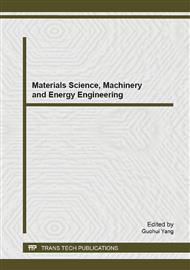[1]
L. Cartz : Nondestructive Testing. (ASM International 1995).
Google Scholar
[2]
W. L. Huang, C. Y. Chang, W. C. Chen, C. N. We, in: Using ANNs to Improve Prediction Accuracy for Rebound Hammers. Taiwan Highway Engineering 37(2), 2-18 (2011).
Google Scholar
[3]
Information on http: /www. engineeringcivil. com/rebound-hammer-test. html.
Google Scholar
[4]
Information on http: /www. enkaymachine. com/proceq6. htm.
Google Scholar
[5]
V.N. Vapnik: The Nature of Statistical Learning Theory (Springer-Verlag, New York 1995).
Google Scholar
[6]
S. Y. Liong and C. Sivapragasam in: Flood stage forecasting with support vector machines. Journal of the American Water Resources Association 38 (1), 173-186 (2002).
DOI: 10.1111/j.1752-1688.2002.tb01544.x
Google Scholar
[7]
J. He, H. J. Hu, R. Harrison, P. C. Tai, Y. Pan, in: Transmem- brane segments prediction and understanding using support vector machine and decision tree. Expert Systems with Applications 30(1), 64-72 (2006).
DOI: 10.1016/j.eswa.2005.09.045
Google Scholar
[8]
B. T. Chen, T. P. Chang, J. W. Shih, J. J. Wang, in: Estimation of exposed temperature for fire-damaged concrete using support vector machine. Computational Material Science 44(3), 913-920 (2009).
DOI: 10.1016/j.commatsci.2008.06.017
Google Scholar
[9]
S. H. An, U. Y. Park, K. I. Kang, M. Y. Cho, H. H. Cho, in: Application of support vector machines in assessing conceptual cost estimates, Journal of Computing in Civil Engineering 21 (4), 259-264 (2008).
DOI: 10.1061/(asce)0887-3801(2007)21:4(259)
Google Scholar
[10]
K. C. Lam, E. Palaneeswaran, C. Y. Yu, in: Support vector machine model for contractor prequalification. Automation in Construction 18 (3), 321-329 (2009).
DOI: 10.1016/j.autcon.2008.09.007
Google Scholar
[11]
J. H. Chen and J. Z. Lin in: Developing an SVM based risk hedging prediction model for construction material suppliers. Automation in Construction 19 (6), 702-708 (2010).
DOI: 10.1016/j.autcon.2010.02.014
Google Scholar
[12]
M. Y. Cheng and A. F. V. Roy in: Evolutionary fuzzy decision model for cash flow prediction using time-dependent support vector machines. International Journal of Project Management 29 (1), 56-65 (2011).
DOI: 10.1016/j.ijproman.2010.01.004
Google Scholar
[13]
S. Gunn: Support Vector Machines for Classification and Regression, ISIS Technical Report (University of Southampton, U.S.A. 1998).
Google Scholar
[14]
C. W. Hsu, C. C. Chang, C. J. Lin, in: A Pratical Guide to Support Vector Classification, Technical Report (Dept. of Computer Science, National Taiwan University, Taiwan 2003).
Google Scholar
[15]
Information on http: /www. esat. kuleuven. be/sista/lssvmlab 2010 (Version 1. 7).
Google Scholar
[16]
Suykens, J.A.K., Gestel, T.V., Brabanter, J.D., Moor, B.D., Vandewalle, J., 2002. Least Squares Support Vector Machines. World Scientific, Singapore.
DOI: 10.1142/5089
Google Scholar


